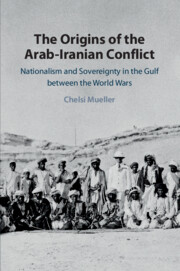 The Origins of the Arab-Iranian Conflict
The Origins of the Arab-Iranian Conflict Published online by Cambridge University Press: 24 July 2020
This chapter analyzes Iran’s policy toward the Persian Gulf during the reign of Reza Shah Pahlavi. The analysis is roughly divided into three periods: the years of 1925‒1932, during which time Reza Shah's court minister, Teymurtash, tried unsuccessfully to regularize the situation in the Persian Gulf through negotiations with the British government; the year of 1933 during which time various crises in the Persian Gulf arising from local challenges to British authority became part of the negotiation process; and the period of 1934‒1941 during which time Iran, encouraged by British withdrawal from Hengam and Basidu, strengthened its reliance on the tactics of deception, bluff, and intrigue in pursuit of its aspiration to obtain a paramount position in the Persian Gulf. This analysis is preceded by a brief discussion of the nature of the Pahlavi state because it provides the necessary context for Iran’s policy toward the Persian Gulf.
To save this book to your Kindle, first ensure [email protected] is added to your Approved Personal Document E-mail List under your Personal Document Settings on the Manage Your Content and Devices page of your Amazon account. Then enter the ‘name’ part of your Kindle email address below. Find out more about saving to your Kindle.
Note you can select to save to either the @free.kindle.com or @kindle.com variations. ‘@free.kindle.com’ emails are free but can only be saved to your device when it is connected to wi-fi. ‘@kindle.com’ emails can be delivered even when you are not connected to wi-fi, but note that service fees apply.
Find out more about the Kindle Personal Document Service.
To save content items to your account, please confirm that you agree to abide by our usage policies. If this is the first time you use this feature, you will be asked to authorise Cambridge Core to connect with your account. Find out more about saving content to Dropbox.
To save content items to your account, please confirm that you agree to abide by our usage policies. If this is the first time you use this feature, you will be asked to authorise Cambridge Core to connect with your account. Find out more about saving content to Google Drive.